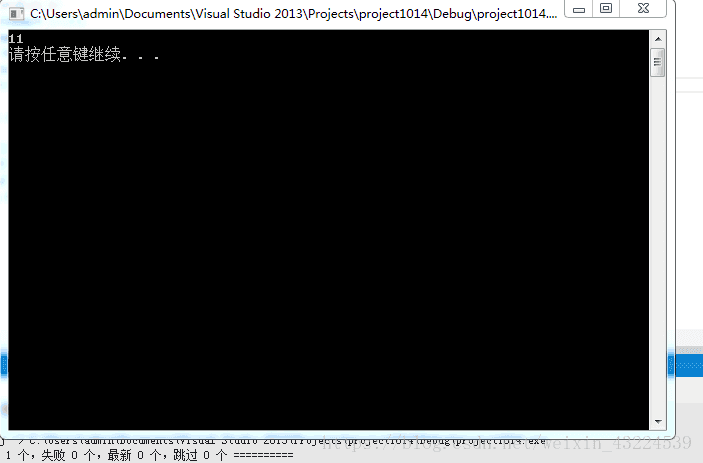C语言中的字符串是通过字符数组的形式来模拟的,字符数组本质上就是一个普通的数组,只不过每个元素的数据类型是char,C风格字符会在数组的最后一个元素中填充成\0作为字符串结束的标记,虽然C语言的字符串是字符数组,但也是可以用一个char*指向字符数组的第一个元素,然后用这个指针来表示字符串
(1)创建临时变量的方式求字符串的长度
#include <stdio.h>
#include <stdlib.h>
int Strlen(char* str){
int count = 0; //创建了临时变量
while (*str != '\0'){
++count;
++str;
}
return count;
}
int main(){
printf("%d\n", Strlen("hello world"));
system("pause");
return 0;
}运行结果为
(2)不创建临时变量的方式求字符串的长度(递归方式)
#include <stdio.h>
#include <stdlib.h>
int Strlen(char* str){
if (*str == '\0'){ //str指向的是一个空字符串
return 0;
}
return 1 + Strlen(str + 1); //str指向的是当前字符串中的一个元素
} //比如:hello 如果指向的是h 那就是1+"ello"字符串
int main(){ //的长度
printf("%d\n", Strlen("hello world"));
system("pause");
return 0;
}运行结果为